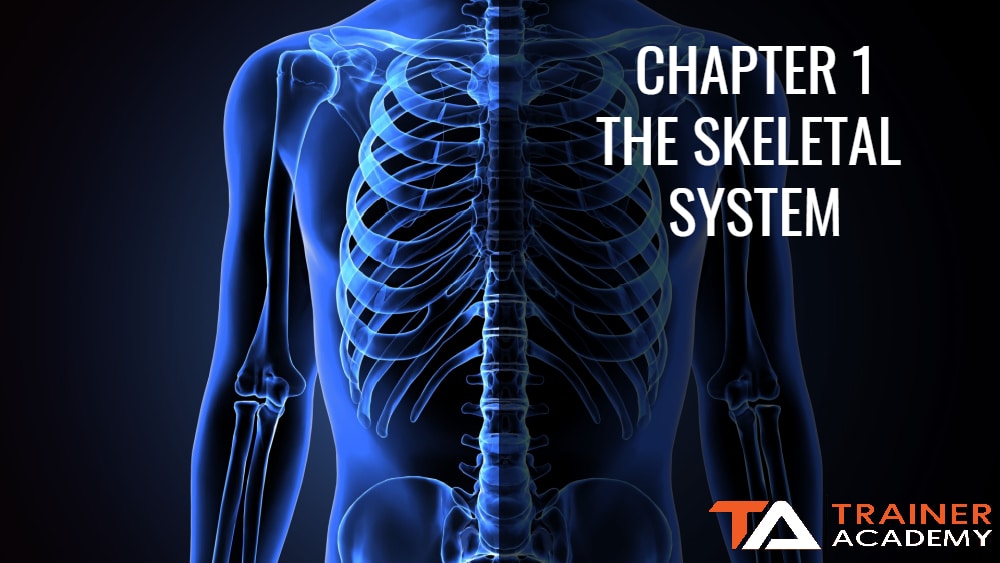The muscular system is responsible for generating the force that drives all human movement. In terms of personal training and exercise, the muscular system adapts in a variety of beneficial ways, depending on the training stimulus.
Fitness professionals need to know the muscular system anatomy and function in order to properly understand the underpinnings of all exercise. Additionally, knowledge of muscular system adaptations helps guide movement decisions for specific outcomes.
Introduction to the Muscular System
The architecture of skeletal muscle is composed of both macro- and micro- structures that interact during muscle contract to shorten the length of the muscle, pulling on the bone across the joint, resulting in movement of the bone with the joint as the pivot point.
Having a strong grasp of the structure and function of skeletal muscles is important for fitness professionals to understand the biological processes behind resistance training, including muscle contraction. This knowledge both helps guide programming considerations as well as competently explain to a curious client exactly what goes on behind the scenes in the human body during motion.

Muscle Macrostructure
Closer examination reveals that muscle consists of a series of grouped bundles.
A layer of connective tissues surrounds the entire muscle, called the fascia, with the outer layer called the epimysium. This fascia surrounds a series of bundles known as fascicles.
Each of these fascicles creates the main belly of the muscle. Outside individual fascicles is another outer layer of connective tissue called the perimysium.
In skeletal muscle, muscle fibers contain a nucleus and striations, giving them their sinewy appearance.
Muscle structure also includes mitochondria, the sarcoplasmic reticulum, and the endoplasmic reticulum. These organelles live inside the sarcolemma, a layer of cell membrane directly underneath the endomysium.3
All in all, there are three anatomical layers of skeletal muscle, from outermost to innermost; These are the Epimysium, Perimysium, and Endomysium.

Muscle Microstructure
Inside the sarcolemma, several microstructures exist that help and allow the muscle fiber to operate as a functional unit.
The mitochondria help facilitate energy creation inside the body, and the ability for muscles to contract.
Striated muscles also contain nuclei. Nuclei act as control centers for individual cells. Without a nucleus, skeletal muscle has no action potential and no contraction.
Along the sarcolemma is a channel known as the t-tubule, or transverse tubule, which releases calcium into the sarcoplasmic reticulum in response to motor unit stimulation. The calcium ions play a key role in triggering muscle contraction.
These structures are all located around the long cylindrical structure known as myofibrils. Bundled myofibrils create muscle fibers. Contractile units called sarcomeres make up the myofibrils.
The sarcomeres themselves contain the smallest muscular structures, protein filaments known as actin and myosin.
When forces pull actin and myosin together, the distance shortens between ends of sarcomeres, known as “Z” lines, creating a muscular contraction.3

Sliding Filament Theory
The sliding filament theory describes the mechanisms of muscular contraction. As mentioned above, contractile proteins actin and myosin live within the sarcomere of a muscle fiber.
Actin, the thin filament, is primarily located in the I-Band. Myosin filaments, which are thicker, are primarily located in the A-Band. These two bands sit in an area from Z disc to Z disc. These Z-discs correspond to the end of each sarcomere. When these filaments pull together within the sarcomere, this creates the H-Zone, the area of overlap.2, 3
In a resting state, the filaments are actually blocked from binding to one another by a protein called tropomyosin. Wrapped around actin, tropomyosin prevents cross bridges from forming by blocking myosin tails from reaching up and binding with actin.
When a motor neuron discharges its action potential, a series of steps occur that result in the shortening of the sarcomere.
This action potential travels from the brain to the desired muscle, signaling for contraction. At this point, the sarcoplasmic reticulum releases calcium ions into the sarcomere.
The calcium binds with troponin sites and causes a rotation of the tropomyosin or actin. When these are rotated, new attachment sites become available for myosin to create a cross bridge.
ATP, adenosine triphosphate, is the energy source at the cellular level. If enough ATP is present in the sarcomere, the tails of the myosin filament now attached to actin at the cross bridge site will pull on the actin filament, causing a shortening of the I-Band, bringing the Z-discs closer together.
When this action repeats it creates a larger H-zone, the area of overlap, until no more calcium or ATP is present, requiring another action potential to release more if needed.2 During this process, the ATP loses a phosphate group and becomes adenosine diphosphate (ADP). The ADP can provide an additional phosphate group as well, further reducing it to adenosine monophosphate. However, the bulk of the phosphate required for muscle contraction comes from ATP.
This overall process of cross bridging results in shortening across the sarcomeres in the muscle that is contracting. The end result is a shortening of the overall muscle, a pulling force on the bone, and the resulting movement about the corresponding joint.
Energy Systems
ATP is required for all muscular actions and gets broken down during the course of muscle contraction. As such, the replenishment of ATP is the primary goal of the energy systems in the human body.
The body’s energy systems include both anaerobic and aerobic methods of ATP replenishment. Anaerobic methods do not require oxygen and typically supply energy for higher-intensity activities. Anaerobic energy production is limited in duration and requires rest between bouts of activity to sustain the high intensity.
Aerobic energy requires the presence of sufficient oxygen in the muscle cell to metabolize glucose and fat and break down ATP. Aerobic energy production is limited by the ability of the body to use and supply oxygen to working tissues. When the work capacity exceeds the availability of oxygen in working tissues, the muscles shift to anaerobic energy. While the aerobic system cannot supply ATP for very high intensity exercise, it can sustain ATP virtually indefinitely if oxygen and either glucose or fat are present in the cell.
The three main systems of the body are the ATP-PC, glycolytic, and aerobic systems. The ATP-PC system is entirely anaerobic. The glycolytic system has the ability to function anaerobically or aerobically depending on intensity. The aerobic system depends on the presence of oxygen to function.
In every human activity, each system contributes to ATP production to some degree. The intensity of the activity will determine which energy system plays the biggest role in replenishing ATP.
ATP-PC System
The ATP-PC system supplies energy for high intensity, short duration activities. It relies on limited intramuscular supply of phosphocreatine (PC) as a rapid source of ATP. The PC supplies the phosphate to rephosphorylate ADP into ATP, and becomes free creatine in the process.
This energy system rapidly yields a high quantity of ATP until PC stores are depleted. At this point, the body must reduce intensity to allow the glycolytic or oxidative systems to replenish ATP and rephosphorylate the free creatine back into phosphocreatine.
The ATP-PC system supplies the vast majority of energy during maximal intensity exercises lasting less than 10 seconds such as Olympic lifting, powerlifting, and short-distance sprints.
The Glycolytic System
The glycolytic system relies on glucose and glycogen for the energy to replenish ATP. Anaerobic glycolysis occurs when the body breaks down glucose or glycogen without any oxygen present.
The glycolytic system is capable of fast glycolysis and slow glycolysis. Fast glycolysis occurs when insufficient oxygen is present relative to the exercise intensity and can quickly replenish ATP stores during high-intensity exercise.
While anaerobic glycolysis can rapidly replenish ATP stores during high intensity exercises lasting 10-30 seconds, lactate and H+ ions are produced as a result and cause a drop in cellular pH, which is associated with muscle fatigue and the need to reduce intensity. Lactate itself is not responsible for the burning sensation associated with muscle fatigue, but the buildup of lactate occurs concurrently with the fatigue.
If you are competing in a quick event or exercise like a 200-meter swim, for example, the combination of glycolysis and decreased pH levels will cause the feeling of fatigue at the end of the swim.
Following intensity reductions or muscle failure, oxygen levels can rise enough to allow clearance of lactate and reliance on aerobic energy.
In this case of lower intensity, slow glycolysis can occur. Slow glycolysis occurs if there is sufficient oxygen in the mitochondria to metabolize the byproducts of glycolysis before lactate accumulation occurs.
The Mitochondrial Respiratory System (Oxidative)
For exercise lasting longer than 30 seconds, the body will begin a shift to slow glycolysis, also referred to as aerobic glycolysis, and the aerobic system. This energy system can sustain ATP replenishment for much longer because the body can use oxygen to metabolize the by-products of glycolysis before they convert to lactate and drop cellular pH.
The extra metabolic steps mean the rate of ATP production is lower than in anaerobic glycolysis. However, the avoidance of lactate buildup means that aerobic glycolysis can be sustained for longer.
Exercise that lasts longer than 3 minutes will be fueled almost entirely by the aerobic energy system. Trained athletes can exercise at absolute intensities much higher than the general population while still relying on aerobic energy. As such, fitness level plays a large role in determining whether a certain absolute intensity will require the addition of anaerobic energy.3
The metabolism of fats and glucose via oxidation has the greatest capacity for ATP production, although it is also the slowest and cannot occur at high intensity.
Muscle Fiber Types
Skeletal muscles in the human body are typically classified into two main muscle fiber types: type I and type II. Different muscles throughout the body will display different muscle fiber types.
Each of these types of muscles will be classified with three types of criteria:
- Movement rates
- Responses to neural signaling
- Metabolic styles
Type I (Slow Twitch)
Type I muscle fibers are classified as such because they rely on oxidative or aerobic metabolism. Type I muscles thrive on the ability to use oxygen to resupply energy, meaning that type I muscle fibers are primed to perform exercise or physical activity at a much slower rate.
This means type I muscle fibers do not fatigue as quickly and can perform muscular action for much longer.
The act of walking is an excellent example. From an early age, most humans can walk for extended periods of time without the muscles of the legs fatiguing. This is due to the slow twitch nature of the muscles in the leg and the body’s ability to utilize oxygen as an energy source.
Type II (Fast Twitch)
Type II muscle fibers rely first-and-foremost on the ATP-PC and glycolytic systems. Type II muscle fibers generally have a greater maximal force output when compared to type I fibers but are quicker to fatigue.
Type II fibers are further broken down into type IIa and type IIx fibers.
Type IIa
Type IIa muscle fibers are an intermediate fiber type. Type IIa muscles have a high capacity for anaerobic energy but have greater aerobic and glycolytic capacity than type IIx fibers.
Type IIx
Type IIx muscle fibers rely primarily on the ATP-PC system for energy. They are capable of the greatest force production but also have the least resistance to fatigue.5, 3

Muscular Adaptations to Exercise
Adaptations to exercise occur in the muscular system over time based on the type and intensity of activity. Anaerobic activities lead to adaptations within the muscle tissue that further improve their ability to produce force anaerobically.
Aerobic training, on the other hand, leads to adaptations that improve the oxidative capacity of muscles due to the duration and intensity of an exercise. These muscles require continuous training to adapt over time and can be reversed with inactive states.6
Resistance Training Muscular Adaptations
The typical change expected from resistance training is a change in the force production capability and cross-sectional size of the muscles. Resistance training causes a series of micro-tears at the level of the sarcomeres.4 The healing of those tears is how the muscle cells specifically adapt strength and size in response to resistance training.
Cross-Sectional Area
In resistance training one of the main adaptations is increased cross sectional area. This occurs over time when the series of microtears seen in the sarcomere of a muscle fiber heal and that healing compacts on itself. The body has the ability to build up the areas of frequent breakdown to handle the stress put on the muscles by an external weight. This build up over time increases cross sectional area, making muscles larger and more defined.7
Strength
Another definable adaptation that occurs with resistance training is increase in force production. Increases in strength and force production mainly occur in response to the increase in cross sectional area. With a larger cross-sectional area, more area becomes available to overlap the protein filaments actin and myosin, resulting in a greater potential for force production.
Aerobic Training Muscular Adaptations
Muscular adaptations to aerobic training improve the fiber’s ability to supply and use oxygen during aerobic exercise.
Increased Capillary Density
After consistent, progressive aerobic training, the body increases the number of capillaries that surround a muscle.
Capillaries are the body’s exchange site for blood and other crucial nutrients. These extremely thin exchange vessels wrap around the skeletal muscle, providing a dropoff site for the muscles to receive and utilize delivered nutrients.
This effect provides increased blood flow and increased surface area. With a larger surface area, a greater area of the muscle is covered by capillaries, creating a shortened travel distance for blood and nutrients to be utilized. This also upregulates the body’s ability to use more oxygen and to use it more effectively.6
Increased Mitochondrial Density
An increase in cellular mitochondria occurs with frequent aerobic training. This increase allows for the body’s aerobic system to function at an increased rate, with more mitochondria able to function, creating an increased rate of fatty acid oxidation and energy production along with biochemical adaptations at the cellular level. Increased mitochondria also promote a more stable environment for type I muscle fiber endurance.6
Shared Adaptations
There are several adaptations that occur as a result of both resistance and aerobic training.
- Increased blood volume
- Increased cardiac output
- Lower resting heart rate
- Reduced symptoms of anxiety
- Reduced symptoms of depression
- Weight loss
Summary
Skeletal muscle is comprised of macro- and micro- structures which create movements where joints interact with bone. Sliding filament theory describes how the actin and myosin filaments cross, creating a shortening of the muscle. ATP is required for all muscle actions and is used through three different types of energy systems (ATP-PC, glycolytic, oxidative). Different muscle fiber types correspond to these systems to produce movements over different time frames. Finally, the muscles adapt to both resistance and aerobic training modalities in specific ways in order to facilitate improvements for future stresses.
References
- Cherry, K. (2020, December 8). All Or None Law for Nerves and Muscles. Retrieved from verywell Mind: https://www.verywellmind.com/what-is-the-all-or-none-law-2794808#:~:text=The%20all%2Dor%2Dnone%20law,or%20muscle%20fiber%20will%20fire.
- Krans, J. L. (2010). The Sliding Filament Theory Of Muscular Contraction. Retrieved from Scitable: https://www.nature.com/scitable/topicpage/the-sliding-filament-theory-of-muscle-contraction-14567666/
- Martini Ph.D, F. H., Nath Ph.D, J. L., Bartholomew M.S, E. F., Ober M.D, W. C., Garrison R.N, C. W., Welch M.D, K., & Hutchings, R. T. (2009). Fundamentals of Anatomy and Physiology. San Francisco: Pearson Benjamin Cummings.
- Proske, U., & Morgan, D. (2001). Muscle damage from eccentric exercise: mechanism, mechanical signs, adaptation and clinical applications. National Library of Medicine, 333-345.
- Talbot, J., & Maves, L. (2016). Skeletal muscle fiber type: using insights from muscle developmental biology to dissect targets for susceptibility and resistance to muscle disease. Wires Developmental Biology, 518-534.
- Terjung, R. L. (1995). MUSCLE ADAPTATIONS TO AEROBIC TRAINING. SPORTS SCIENCE EXCHANGE.
- The Strength Institute of Austrailia. (2017, 12 1). The Physiological Responses to Resistance Training. Retrieved from The Strength Institute of Austrailia: https://www.thestrengthinstitute.com/articles-and-podcasts/2017/12/1/the-physiological-effects-of-resistance-training












